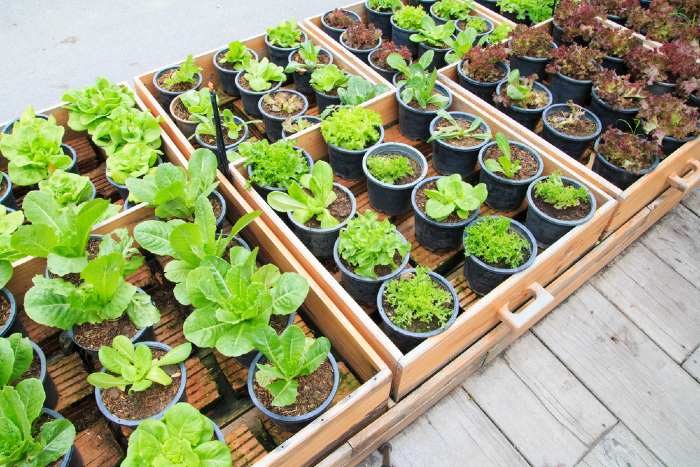Vegetables You Can Plant In February

Make sure to like Living Green and Frugally on Facebook, Shop at amazon to help support my site and explore our PINTEREST BOARDS for innovative ways you can become self-sufficient.
As February ushers in a transitional period between winter and spring, gardeners eagerly anticipate the opportunity to begin sowing seeds and preparing for the upcoming planting season. Understanding the USDA Hardiness Zone you reside in is pivotal, as it determines the most suitable vegetables and plants to cultivate during this time.
The USDA Hardiness Zone Map serves as a guide, dividing North America into 13 zones based on average minimum winter temperatures. Each zone indicates the range of temperatures wherein specific plants are likely to thrive. Here’s a breakdown of what’s ideal to plant in February based on various zones:
View this post on Instagram
USDA Plant Hardiness Zone Map:
- Zone 1: Minimum temperatures below -50°F (-45.6°C)
- Zone 2: Minimum temperatures between -50°F to -40°F (-45.6°C to -40°C)
- Zone 3: Minimum temperatures between -40°F to -30°F (-40°C to -34.4°C)
- Zone 4: Minimum temperatures between -30°F to -20°F (-34.4°C to -28.9°C)
- Zone 5: Minimum temperatures between -20°F to -10°F (-28.9°C to -23.3°C)
- Zone 6: Minimum temperatures between -10°F to 0°F (-23.3°C to -17.8°C)
- Zone 7: Minimum temperatures between 0°F to 10°F (-17.8°C to -12.2°C)
- Zone 8: Minimum temperatures between 10°F to 20°F (-12.2°C to -6.7°C)
- Zone 9: Minimum temperatures between 20°F to 30°F (-6.7°C to -1.1°C)
- Zone 10: Minimum temperatures between 30°F to 40°F (-1.1°C to 4.4°C)
- Zone 11: Minimum temperatures between 40°F to 50°F (4.4°C to 10°C)
- Zone 12: Minimum temperatures between 50°F to 60°F (10°C to 15.6°C)
- Zone 13: Minimum temperatures above 60°F (15.6°C)
Here’s a breakdown of what vegetables are suitable for planting in February according to different zones:
Zone 3-6:
- Indoor Seed Starting: For colder regions in Zones 3-6, February is an opportune time to start seeds indoors for plants like tomatoes, peppers, and eggplants. These warm-season crops benefit from an extended growing season initiated indoors.
Zone 7-10:
- Broccoli: In these zones, a quick-growing Broccoli variety offers the chance to harvest until it bolts in the scorching summer sun. Varieties like De Cicco are recommended for a prolonged harvest period.
- Herbs: Indoor gardening during winter months becomes an enjoyable endeavor across all zones, especially for growing herbs like basil, oregano, thyme, and sage, which prefer warmer conditions. Consider exploring kits like the Urban Farmer Herb Kit for added convenience.
- Lettuce: Optimal for Zones 7-10, initiating a crop of salad mix greens that receives partial sunlight is advantageous for spring harvests until lettuce begins bolting in hotter temperatures.
- Onions: It’s time to start germinating onion seeds in these zones. Long day onions suit Zones 7-10, while short day onions are recommended for Zones 3-6. Choose onion varieties appropriate for your specific climate conditions.
- Peppers: Gardeners in these zones can enjoy cultivating peppers, which require minimal space yet offer high yields. Diversity is key—plant various pepper varieties of different sizes, heat levels, and colors for a vibrant garden. Starting seeds indoors 8-10 weeks before the last frost yields optimal results.
- Tomatoes: Considered one of the most popular garden vegetables, tomatoes come in an array of colors, shapes, and sizes. Experiment with different varieties each year to discover personal favorites. Begin tomato seeds indoors 6-8 weeks before the last frost for successful cultivation.
General Recommendations for All Zones:
- Annual and Perennial Flowers: Prepare for spring by germinating various annuals and perennials suitable for your zone. Different flowers have varying grow times, ensuring they’re ready for planting post-last frost. Some examples include Zinnias, Marigolds, Geraniums (annuals), and Rudbeckias, Daisies, Poppies, Coneflowers (perennials).
Remember, microclimates can impact local conditions within the same zone. Consider factors like elevation, proximity to water bodies, and urban heat islands when planning your garden.
As February signals the start of the gardening season in many regions, utilizing this guide based on your specific USDA Hardiness Zone ensures a successful and fruitful gardening experience.